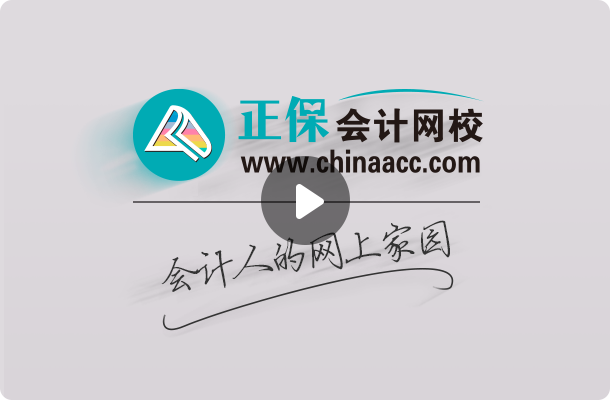@所有初级考生 考前重磅福利231页冲刺备考“蓝皮书”已发布
2022-07-082022初级会计考生速看!往年《初级会计实务》考试考点回顾(二)
2022-07-082022初级会计考前关注:往年《经济法基础》考试考点回顾(二)
2022-07-08
¥200/2科
立即购买¥36.00 立即购买
¥32.55 立即购买
¥33 立即购买
¥72.05 立即购买
¥72.05 立即购买
¥72.05 立即购买
¥72.05 立即购买
¥99/两科
立即抢购网校的初级课程太棒了,顺利拿下初级,感谢各位老师的辛苦付出。
老师的课,超易懂,一听就会,配上课后习题,想不通过都难。
赞!课程好、服务到位、答疑板更及时,我取到证书啦。

¥240/考期
立即购买¥780/科起
立即购买¥980/科起
立即购买侯永斌老师讲课每个案列会说个故事,轻松记住法律原理
基础不好,听了冯雅竹老师的课很受用,重难点突出。
高志谦的会计纵横捭阖,妙趣横生,尤其是“母仪天下”的母题。
达江的财务管理深入浅出,举例恰当,听完觉得考试就能过!
距离考试报名还有天

¥15980.00起
立即报名¥112.75 立即购买
¥55.2 立即购买
¥45 立即购买
¥50.6 立即预订
¥41.25 立即预订
¥15980起
立即购买感谢各位老师,第一次参考高会实务84分通过。
感谢刘国峰老师、贾国军老师,讲的很好,学起来很轻松,86分通过。
感谢网校老师,坚持听你们的讲课,对高会的通过有非常大的帮助。

¥4980/6科/3考期
立即报名¥134.40 立即购买
¥111.00 立即购买
¥108.00 立即购买
¥106.20 立即购买
¥830/科起
¥780/科起
听课理解做题总结,不要怕反复,熟能生巧。听完课马上就要做梦想成真课后题巩固知识,查漏补缺。
郭建华老师的课让人越听学兴奋,绝对不犯困。郭建华老师的最经典的话“不会做怎么办,抄吧,抄多了就会了!
学习审计,我是以听课为主,跟着老师的思路走,反复理解,反复看书看讲义,适当做题,我主要是做。
¥480起
¥680起
立即购买我最喜欢跟杨军老师学习税法,老师讲的例子让人印象深刻。
叶青老师我是她铁粉,她是我女神。
老师的课,一听就会,总能把我心里的疑问给讲出来。
网校的税务师课程太棒了,顺利拿下初级,感谢各位老师的辛苦付出。
赞!课程好、服务到位、答疑板更及时,我取到证书啦。
陈楠老师的课,超易懂,一听就会,配上课后习题,想不通过都难。
距离税务师考试还有天

¥500.00起
立即报名¥2200
立即购买感谢网校老师!2019年一次性通过3门,实务二84分拿下!
听课理解做题总结,不要怕反复,熟能生巧。听完课马上就要做梦想成真课后题巩固知识,查漏补缺。
赞!课程好、服务到位、答疑板更及时,我取到证书啦。
郭建华老师的课让人越听学兴奋,绝对不犯困。郭建华老师的最经典的话“不会做怎么办,抄吧,抄多了就会了!
距离资产评估师考试还有天

¥700/科 起
立即报名¥72-75.6 立即购买
¥59.4-75.6 立即购买
¥47.85-52.8 立即购买
¥21.6 立即购买
¥20.25 立即购买
¥1100
立即购买¥2080
立即购买听郭老师的课,都不用复习,听过去就能记80%,计算题真的是送分题。张宁老师也是讲得非常棒,喜欢。
感谢张宁老师、感谢郭晓彤老师!3个月的努力,终有收获!
感谢张宁老师2个月以来的陪伴,老师讲得真的很好!希望下次考高级时还能听您的课。

¥15800
立即报名¥8800/科
立即购买老师的课,易懂,一听就会。总能把我心里的疑问给讲出来。
老师的课,易懂,一听就会。总能把我心里的疑问给讲出来。
老师的课,易懂,一听就会。总能把我心里的疑问给讲出来。
¥580
立即购买虽然我不是做基金工作的,但是在老师的细心讲解下,我顺利通过了这次基金从业科目一的考试,谢谢李超老师。
我很激动,考试通过了,43岁的我经过半年的准备,努力总算没有白费。感谢李超老师
刚查了成绩,证券投资基金75分,基金法律法规82分!真心感谢会计网校的每一位老师!
基金从业资格考试一次过关,感谢李超老师、感谢徐娜老师。你们辛苦了!
李超老师的课程思路挺清晰的,现在正在学习,争取一次通过!
科目一76分,科目二73分,学的时间不长,竟然可以通过考试,太感谢网校了!
开票软件,实际操作开票全过程
发票查验,完成发票真伪验证操作
纳税申报,征期申报表填写实战

会计人的网上家园
考培,继教,实操,咨询,就业
百余位老师主讲,千位师资共同执教
22年辅导经验,全国状元频出
移动学习随时随地,智能答疑
Copyright © 2000 - 2022 www.fawtography.com All Rights Reserved. 北京东大正保科技有限公司 版权所有